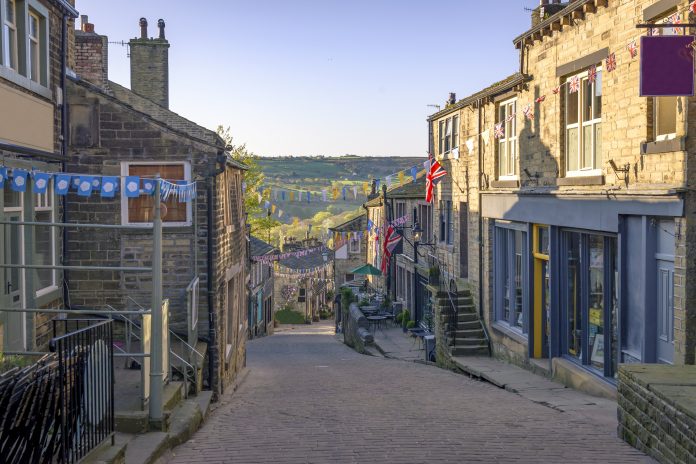Nigel Wilcock, Executive Director of the Institute of Economic Development, lifts the lid on rural relevance to economic levelling up
Current economic strategies tend to lean towards an urban narrative with the important rural agenda overlooked – despite the importance of resources, activities and people in these areas to the future economic strength of the nation.
A recent report from the Rural Services Network (RSN) states that predominantly rural areas in England contributed £260 billion of Gross Value Added to the national economy during 2018. This accounts for almost a 16% share of England’s economic output. That rural share has reduced somewhat over time, from 16.4% in 2010 to 15.9% in 2018, as London has expanded further its share of the country’s activity.
If the UK is to better utilise its overall resource base, its existing built assets and infrastructure and the whole of its population, then productive effort needs to be distributed more evenly. The Industrial Strategy (and subsequent local versions) and the UK Government’s A Plan for Jobs fail to recognise that rural economies present great opportunities for the UK and this situation needs to be redressed if we are to bounce back better.
Rural relevance in the economic agenda
This is why the Institute of Economic Development (IED) and the RSN have devised a new practitioner-focused toolkit as a guide for anyone seeking to raise rural relevance in the economic agenda. It is designed to ensure that rural areas are better recognised in economic strategies and to enable the identification of new opportunities to drive forward rural initiatives. It sets out how rural areas can define themselves; find and present the relevant data; use comparators and time series data to identify strengths and weaknesses and then combine this with lived experience to seize the initiative in strategy.
There are, of course, stereotypes on what is meant by a rural economy. It is important to note that rural economies are much more than land-based businesses (including farming). Whilst these are, of course, important, 85% of rural businesses are from other sectors, including key sectors (depending on location) of professional services, retail, tourism and construction.
Many drivers of change in the economy have an important rural dimension and create economic opportunities. The most important drivers in this toolkit are identified as low carbon, digitisation, ageing and wealth creation. There are many examples of best practice, where rethinking a rural approach led to economic gains ignored by mainstream strategy. Our toolkit approach encourages lateral thinking, not standardisation. There is no such thing as ‘rural businesses’ – any business can thrive in a rural setting.
By uncovering the issues that are preventing rural economies from gaining full recognition, reviewing some of the policy drivers that are affecting rural economies, and outlining some of the ‘mega trends’ which will create change in rural economies but links these to opportunities we hope to increase recognition of the value of rural.
The toolkit gives those responsible for economic strategies the steps that can be taken steps to ensure that rural economies remain in the economic narrative and what success looks like. It is also important to note that what works in one rural economy will not be the model to adopt in another locality, but it is recognised that the differences between areas are, in many ways, the aspects that create so many opportunities.
Ultimately we want to see the potential of rural economies realised and will be delivering further ‘on the ground’ activity to effect change.
10 tips for delivering a successful economic strategy
Start with an open mind
Issues are not always apparent and there are many locations where economic myths have been shared. Be driven by the data available to you.
Know when to stop
A thorough analysis of the main data sources is probably sufficient. Drill down when issues are discovered, but the end goal is the strategy and data analysis is time-consuming.
See the big picture
Data analysis can suck anyone into the minutiae. Stand back because there is a need to see through the detail into the overall situation.
Consider dependencies
One problem with economic data is cause and effect. Does an area with comparatively poor skill levels attract businesses from sectors requiring lower skills or vice versa?
Share views with others
Economic analysis and strategy are done well when there is wide discussion and engagement with others. Factor this into your planning.
Identify the issues before individual actions
There may be more than one way to address the problem/opportunity, so make sure you are aware of what those fundamental issues are first.
Focus on the priorities
A good strategy will have a handful of agreed actions and successful outcomes by all relevant parties pulling together in the implementation.
Consider what others have done
It is rare for an area to be the first to be affected by the problem or see such an opportunity. Are there good examples elsewhere that can be followed?
Engage others and develop a plan
Too many strategies end with a list of actions with no clear view about how they will be delivered – and as such achieve nothing.
Review regularly
The best plans are iterative learning from the things that work well and dispensing with the actions that are not delivering.
To download the IED and RSN Rural Economy Toolkit go to https://ied.co.uk/news_events/new_rural_economy_toolkit_to_support/.











